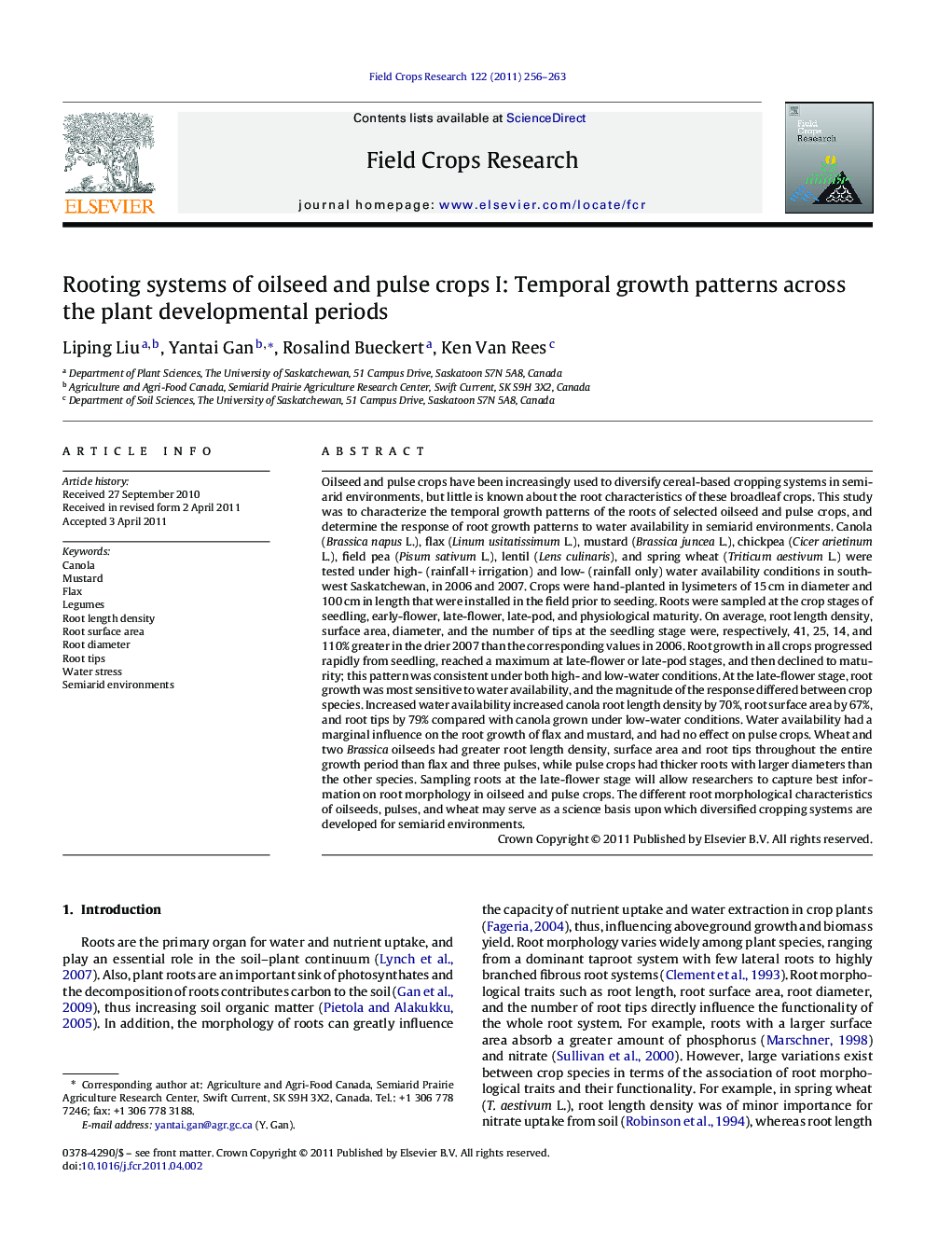| کد مقاله | کد نشریه | سال انتشار | مقاله انگلیسی | نسخه تمام متن |
|---|---|---|---|---|
| 4510733 | 1321871 | 2011 | 8 صفحه PDF | دانلود رایگان |

Oilseed and pulse crops have been increasingly used to diversify cereal-based cropping systems in semiarid environments, but little is known about the root characteristics of these broadleaf crops. This study was to characterize the temporal growth patterns of the roots of selected oilseed and pulse crops, and determine the response of root growth patterns to water availability in semiarid environments. Canola (Brassica napus L.), flax (Linum usitatissimum L.), mustard (Brassica juncea L.), chickpea (Cicer arietinum L.), field pea (Pisum sativum L.), lentil (Lens culinaris), and spring wheat (Triticum aestivum L.) were tested under high- (rainfall + irrigation) and low- (rainfall only) water availability conditions in southwest Saskatchewan, in 2006 and 2007. Crops were hand-planted in lysimeters of 15 cm in diameter and 100 cm in length that were installed in the field prior to seeding. Roots were sampled at the crop stages of seedling, early-flower, late-flower, late-pod, and physiological maturity. On average, root length density, surface area, diameter, and the number of tips at the seedling stage were, respectively, 41, 25, 14, and 110% greater in the drier 2007 than the corresponding values in 2006. Root growth in all crops progressed rapidly from seedling, reached a maximum at late-flower or late-pod stages, and then declined to maturity; this pattern was consistent under both high- and low-water conditions. At the late-flower stage, root growth was most sensitive to water availability, and the magnitude of the response differed between crop species. Increased water availability increased canola root length density by 70%, root surface area by 67%, and root tips by 79% compared with canola grown under low-water conditions. Water availability had a marginal influence on the root growth of flax and mustard, and had no effect on pulse crops. Wheat and two Brassica oilseeds had greater root length density, surface area and root tips throughout the entire growth period than flax and three pulses, while pulse crops had thicker roots with larger diameters than the other species. Sampling roots at the late-flower stage will allow researchers to capture best information on root morphology in oilseed and pulse crops. The different root morphological characteristics of oilseeds, pulses, and wheat may serve as a science basis upon which diversified cropping systems are developed for semiarid environments.
► Root growth progressed aggressively from seedling to the late-flower and then declined to maturity; this trend was consistent for all oilseeds and pulses tested.
► Responses of root growth patterns to water availability varied substantially among crop species; canola was the most sensitive to water availability.
► Differences in root morphology were small among three pulse crops, but field pea typically had greater number of root tips than lentil and chickpea.
► Canola and mustard had similar root length and surface areas as spring wheat, and they were all greater than pulses and flax.
Journal: Field Crops Research - Volume 122, Issue 3, 14 June 2011, Pages 256–263